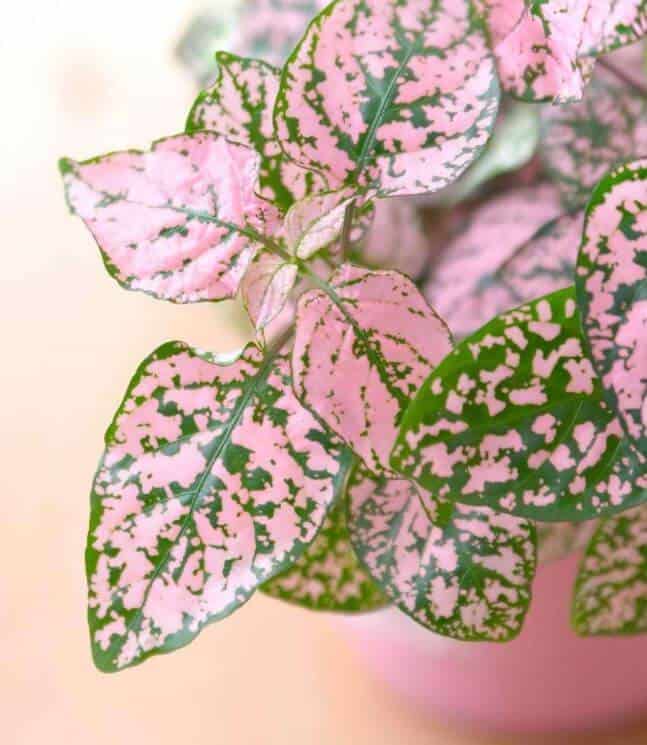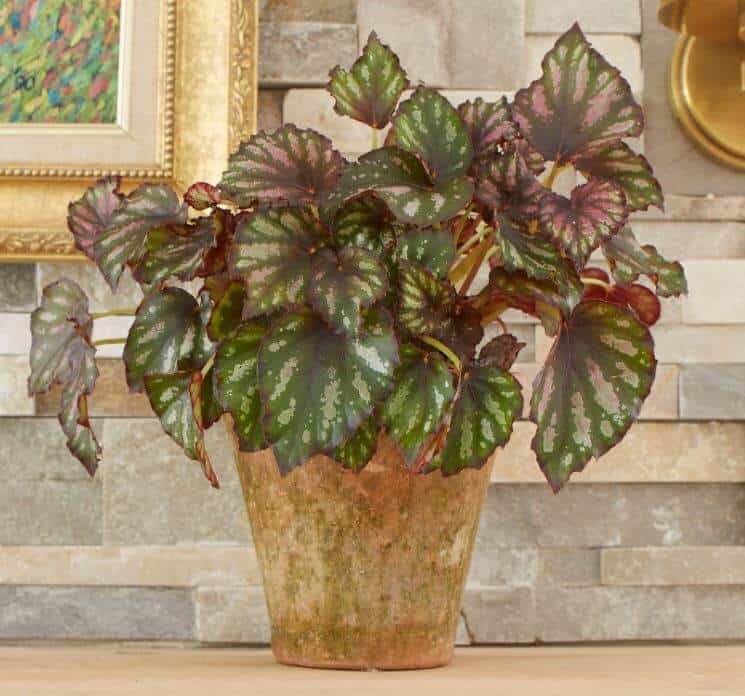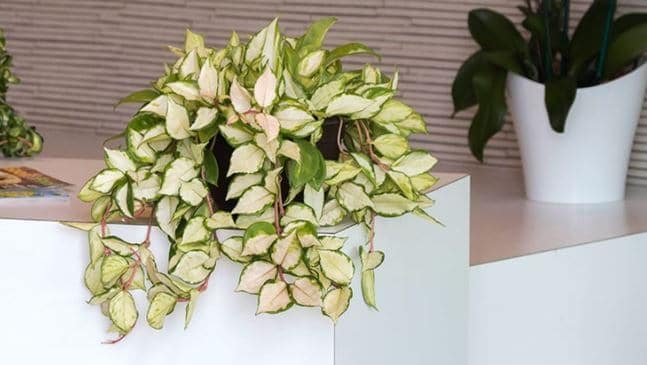Last Updated on March 26, 2023 by a Friendly Gardener
What, you may wonder, is an Exotic Angel plant? This is not a plant variety or cultivar but the brand name for more than 400 pedigreed houseplants that have been and are cultivated by Hermann Engelmann Greenhouses, Inc. throughout its more than 40 years in the plant business.
A Brand Is Born

The Engelmann name is well respected for its production of foliage plants. During the 1970s, the company relocated from the north to the temperate climate of Florida and enlarged its facilities to approximately 3 million square feet of greenhouses located in Apopka, Florida. The Exotic Angel name refers to the German word for angel “Engel” as in Engelmann.
Engelmann distinguished himself as a grower by creating a private label and brand name for his plants. All Exotic Angel houseplants were and are grown exclusively in the Engelmann greenhouses. Engelmann houseplants bear the company logo and come complete with care instructions and color coding for light necessities. Plants come in pot sizes as large as 8 inches.
Engelmann’s selection of houseplants for sale features approximately 400 or so varieties, with the majority being popular houseplant species such as Aglaonema, Pothos, Dieffenbachia, Ficus, Dracaena, Ferns, or Anthurium. This brand does not produce houseplants for collectors but aims to provide beautiful houseplants to as many homes as commercially possible. Even so, the company does feature some more uncommon plants such as a Purple Passion Plant or a Laceleaf.
A Brand Changes Hands
Founder Herman Engelmann died in 2014, and afterward, Costa Farms purchased the company, which promised to support the Exotic Angel brand name and continue to invest in it. Costa Farms is a group of companies that is family owned and now on its third generation of management. The company’s headquarters are in Miami. In 2017, Costa Farms entered into a partnership with Markel Ventures however Costa has maintained independent management rights.
True to their pledge, Costa Farms has continued the Exotic Angel brand, selling through plant retailers. They do not sell to individual consumers. If you are looking for this brand, the company lists an extensive selection of retailers on its website.
Why Should I Buy an Exotic Angel Plant?

Undoubtedly, the kinds of houseplants sold by the Exotic Angel brand can be found through any number of anonymous growers. But as a branded houseplant, each plant comes with a type of pedigree, and the company will go to extraordinary lengths to maintain the brand’s reputation. Costa Farms will control every step of the cultivation process and will only ship healthy houseplants to selected retailers. Management also invests heavily in market research to ensure that the packaging and containers, as well as the plants themselves, are the best they can offer.
The Exotic Angel brand wants the customer to be successful when caring for one of its plants.
Exotic Angel Plant Care

Depending on the plant you purchase, it will have specific needs for that particular variety. The majority of tropical plants have similar care needs, and each Exotic Angel plant comes with a care tag inserted in the soil bed that identifies the variety of plants you have purchased or received and their general care needs.
Soil
Most Exotic Angel plants require well-draining potting mixes that have some moisture retention capabilities and ensure that soil is well aerated. For varieties that love moisture, a potting mix amended with peat will work fine, while drought-tolerant species will thrive in a cactus soil mix with extra perlite to guarantee great drainage.
Light
Tropical plants in general do best in bright yet indirect sunlight. They can be positioned near a window but should never receive direct rays. Should your plant’s foliage begin to fade, it is most likely receiving too much light and should be moved to a room with lower light conditions.
Water

Watering will depend greatly on the species of plant, but it’s safe to say that most Exotic Angel varieties will appreciate evenly moist soil. The soil bed should never be soggy or waterlogged. Plan on watering when the top third or so of your plant’s soil bed feels dry. Dracaenas and pothos can be watered a bit less, while ferns will need more.
Keep in mind that yellowing leaves and soft stems are indicative of overwatering, while crispy edges on drooping foliage imply your plant is thirsty.
Humidity
Generally speaking, most Exotic Angel houseplants will do well when indoor humidity levels sit between 40% and 50%. If your indoor air tends to be dry, consider using a space humidifier or creating a pebble tray to place underneath your plant’s container. If foliage develops dry spots, your humidity levels may be too low.
Temperature
Consider that most houseplants do fine in temperatures ranging between 65° and 85° F. Most plants should, as a rule, be kept away from drafts as well as heating and air conditioning units and vents.
Feeding

Any houseplant can consume soil nutrients within a matter of months, so feeding your Exotic Angel plant is advisable. For foliage plants, a liquid, all-purpose fertilizer should work fine during the growing season. Fertilize after watering to protect roots or mix in a very small amount of fertilizer when watering every week. For succulent varieties, you must use a formula specifically blended for these types of plants.
Exotic Angel Plants Problems
Problems will vary depending on the particular species of houseplant, however, there are some common symptoms to be on the lookout for.
Black leaves – Your plant may be cold or exposed to drafts.
Dry, crispy-edged, or yellowing foliage – These are symptoms of underwatering. Remove any affected leaves and water your plant deeply.
Faded foliage – Your plant has received too much light.
Mushy stems, bad odor – Your plant most likely has developed root rot. Remove the plant from its container, rinse off the root system, trim off any infected roots, and repot in fresh soil. Resist watering immediately.
Soft stems, yellow leaves, and dark brown spots – These symptoms can indicate too little light or too much water. If the soil feels wet, you’ve overwatered.
Small brown or red spots on foliage – You may have a pest infestation. Examine your plant for webbing or a sticky residue. Spray wash your plant to remove pests and then treat it with insecticidal soap or neem oil.

